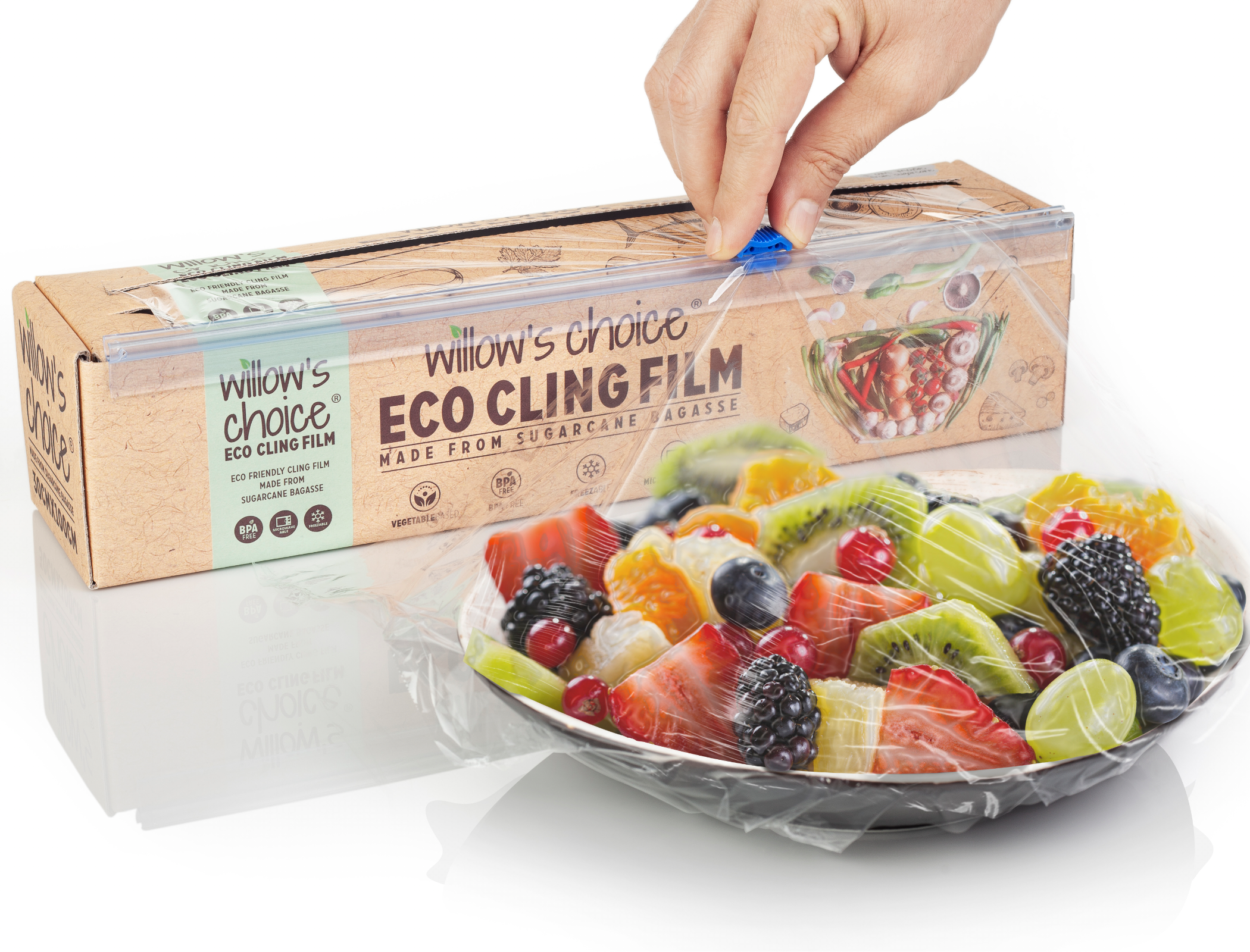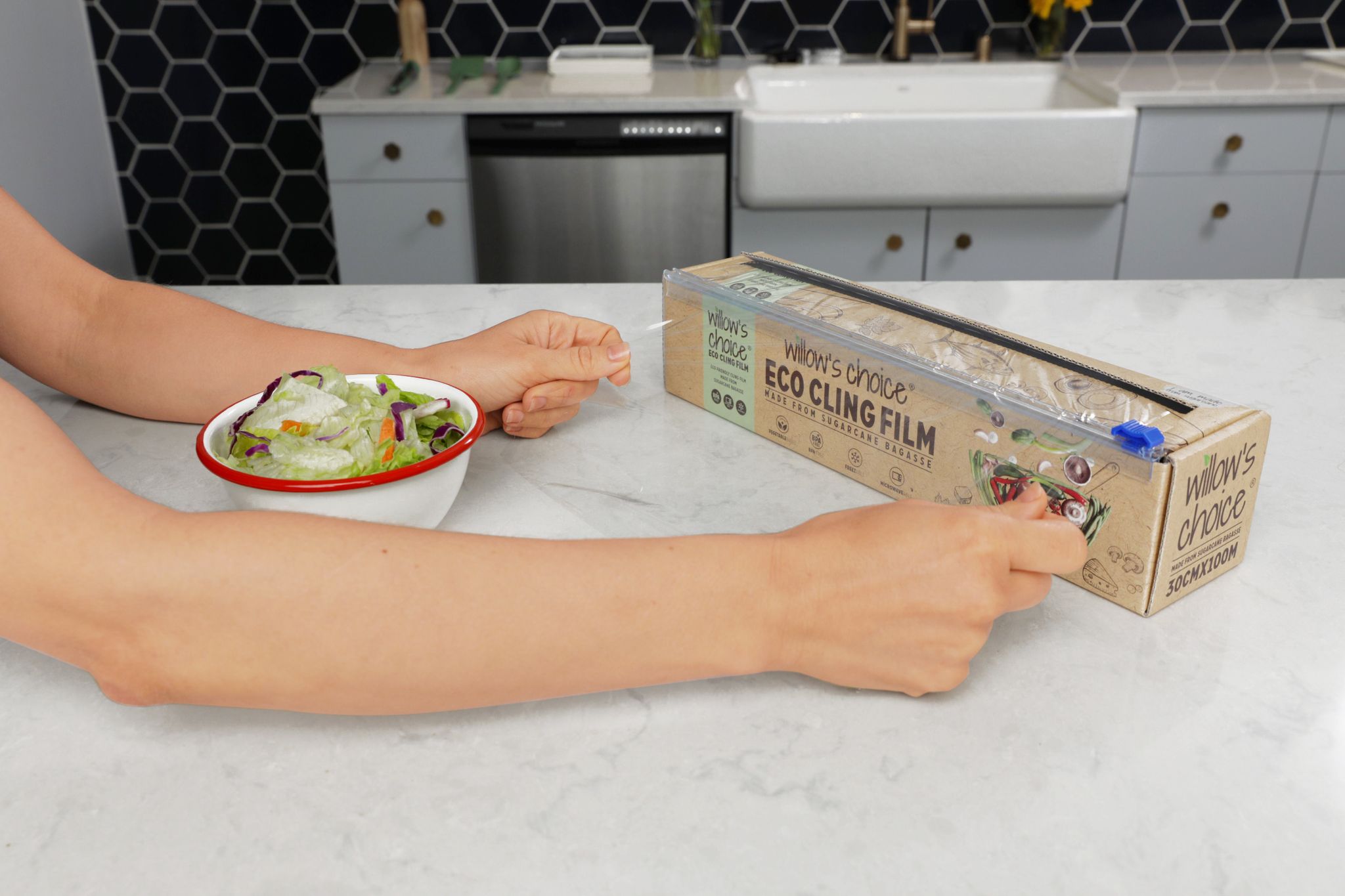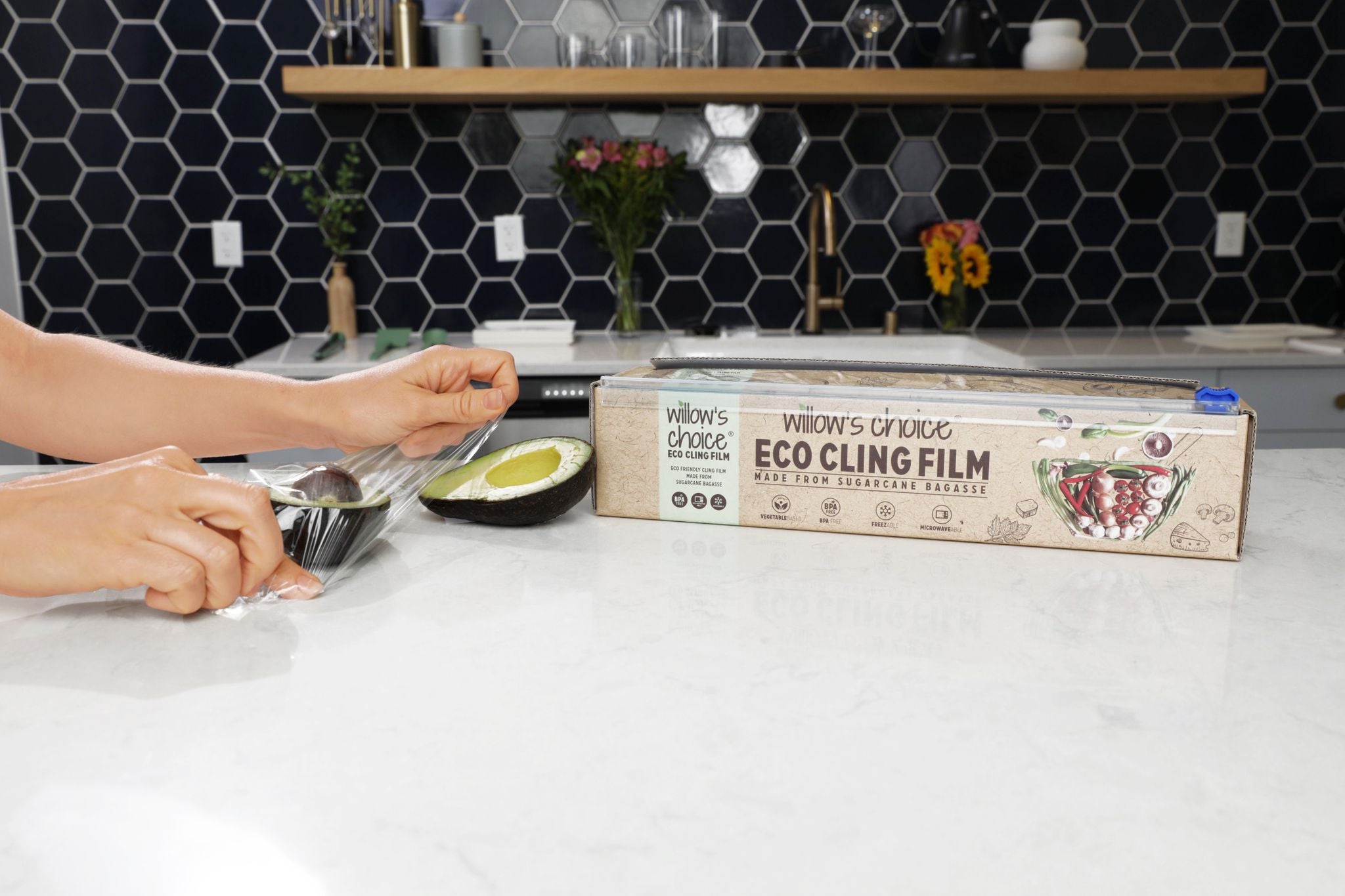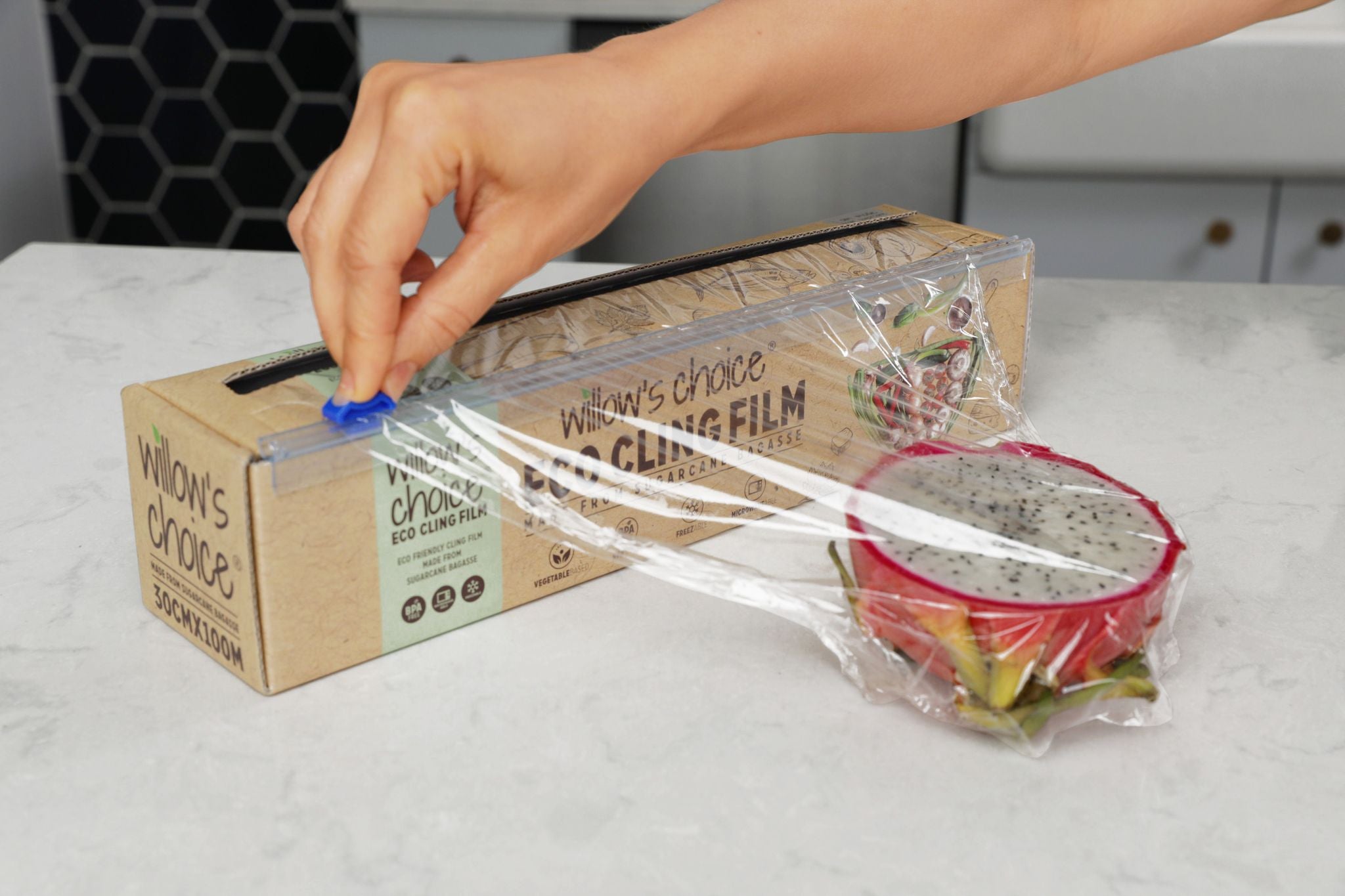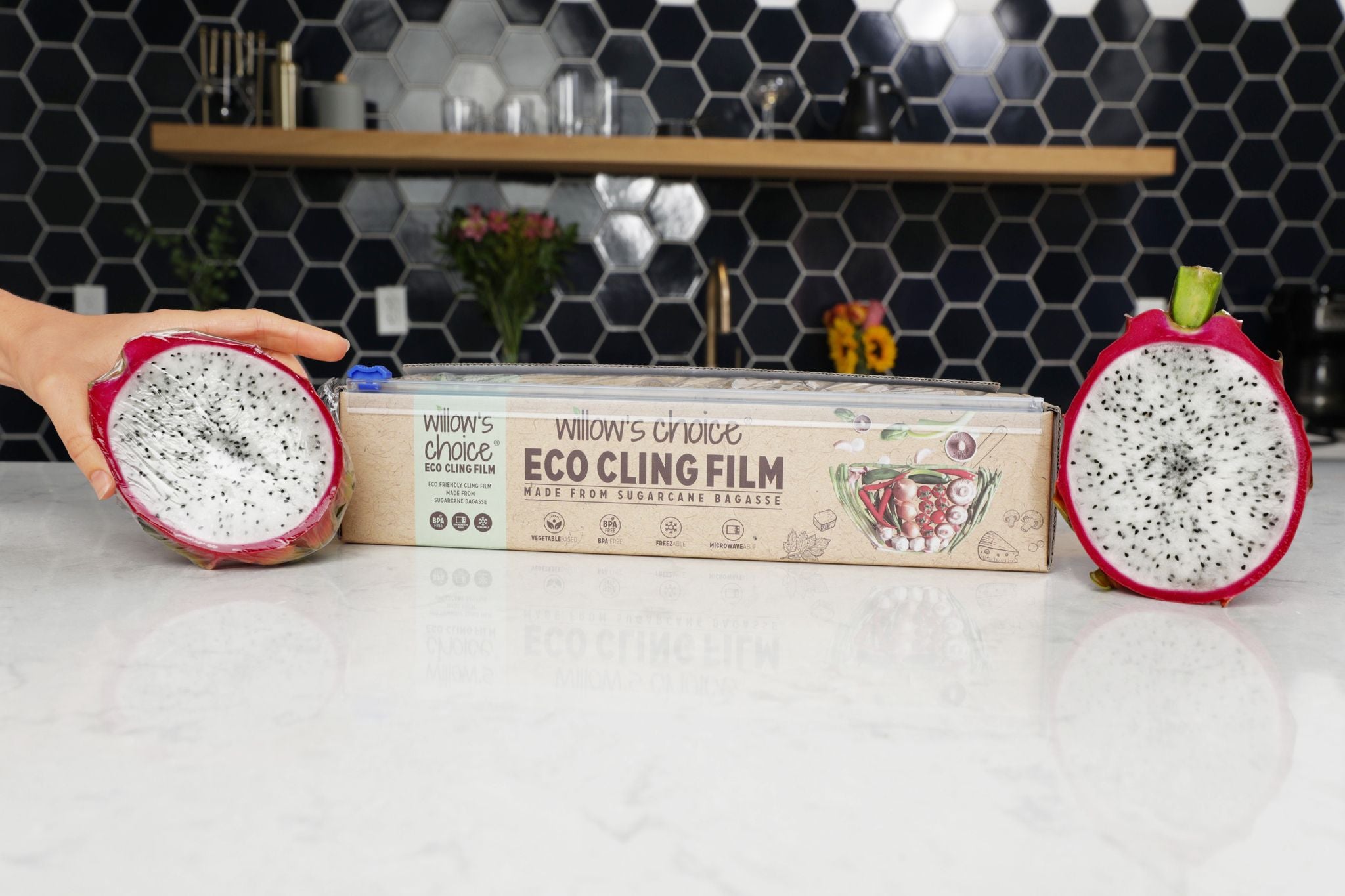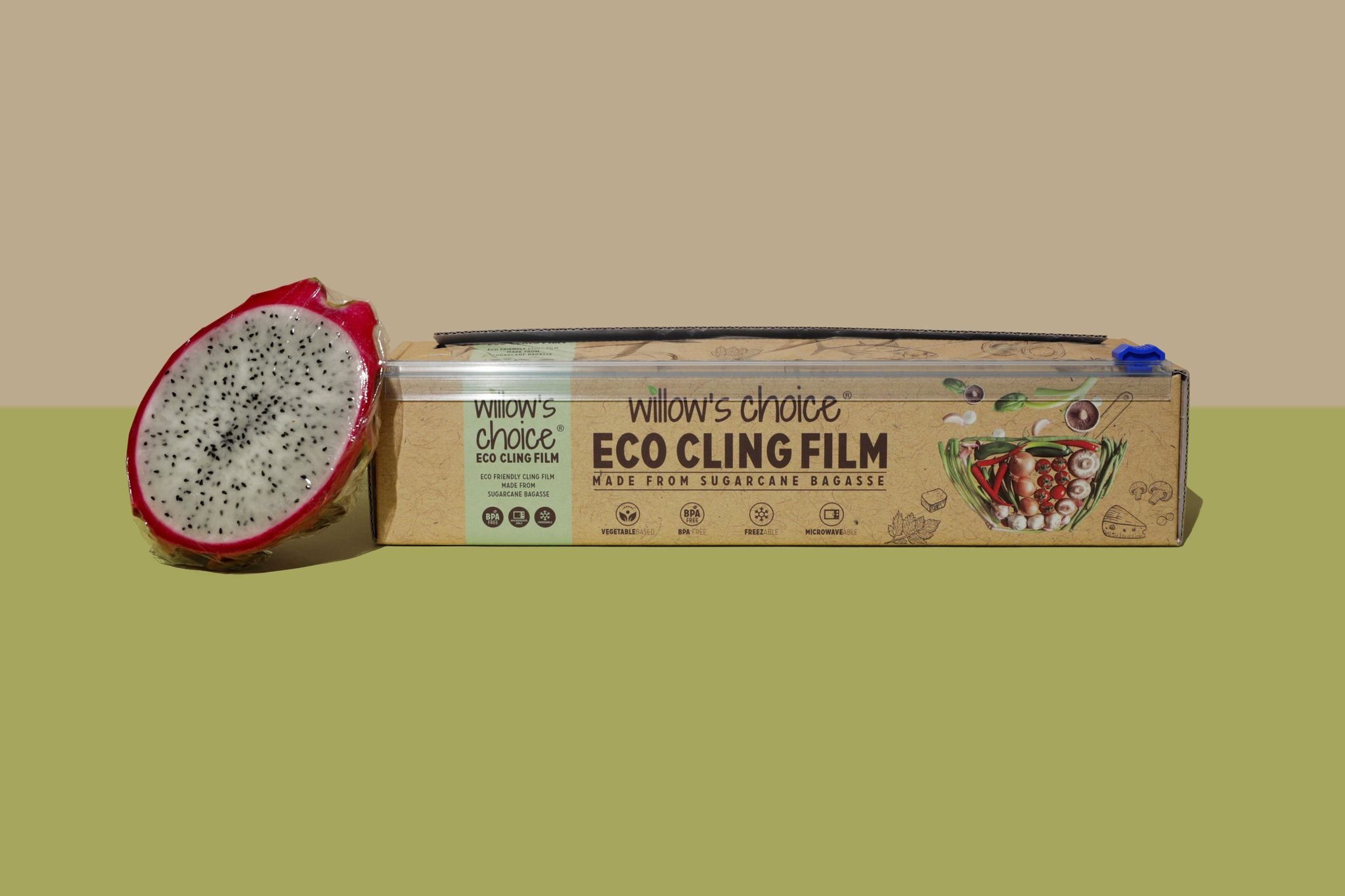About Willow’s Choice
Willow's Choice produce thoughtful and innovative eco-friendly food preservation and food preparation products from natural sugarcane bagasse waste to help reduce both food waste and carbon emissions. Using sugarcane, a renewable resource, contributes to the reduction of global warming, carbon emissions and also reduces our dependence on petroleum-based plastics.
Our formula: Love food, Loathe Food Waste = Reduced Carbon Emissions
Why we care about food waste

The global food system is one of the major contributors to climate change, largely due to the amount of wasted food.
You may not have thought about it before, but food waste is such a big problem that when taken into consideration, the emissions from food waste are four times as much as those produced by the aviation industry.
How does food generate greenhouse gases?
When food is thrown away it ends up being buried in a landfill. Here it decomposes without oxygen, and releases methane – a harmful greenhouse gas which is by some measures 84 times more potent than carbon dioxide.
This greenhouse gas traps and absorbs heat which slowly over time is raising the earth’s temperature.
Carbon emissions are also produced whenever food is grown, transported and sold.
Whilst the carbon emissions from one person’s food waste may not seem significant, when we add it up on a global scale the emissions from food waste are huge.
One-third of all of the world’s food goes to waste, which accounts for 6.7% of all carbon emissions.
If food waste was a country, it would be third behind the US and China in terms of carbon emissions.
But this isn’t all. When food gets wasted, we’re also wasting all of the land, water, energy and other resources that went into producing it, impacting biodiversity – the variety of life on earth – and polluting our environment.
Willow's Choice approach to helping with food loss and waste offers a rare “triple win”, that is, economic gains, reduction of environmental impacts and improved quality of life for those who currently lack sufficient food.

Sugarcane Plastic- A sweeter, greener alternative to plastic from non- renewable fossil fuel sources
It can be said that climate change is unarguably the biggest challenge we are confronted with today. There is a shift happening everywhere. It's a shift away from fossil fuels like petroleum coal and natural gas to safer, more renewable materials.
Fossil fuels are all around us. They power our cars. They heat our homes. They're in the plastic objects that used by most people daily. Most plastic is made from non-renewable petrochemicals. The extraction process and conversion into plastic releases carbon into the atmosphere, adding to climate change.
For so long, we felt like we didn't have any alternatives, but that's not necessarily true anymore.
These days, you can make plastic from bamboo. You can make plastic from grass. You can make plastic from corn, but there was one alternative in particular that really caught our eye because it didn't upset an ecosystem and it didn't upset food supply. Sugarcane.

Sustainably sourced from Brazil
Willow's Choice sources its sugarcane plastic raw materials from Brazil who with a little over 3 million square miles, is the world's largest grower of sugarcane.
A whole third of this huge country is used only for farming, but because sugar cane is a dense and productive plant, growing it only uses about 1% of that farmable land. Brazilian sugarcane is very water efficient. Almost all of it is irrigated naturally by simply rain.
The sugar cane region is in the center South of the country, about 1200 miles away from the Amazon rainforest. So there's no chance of contributing to any deforestation.
The good thing about growing sugar cane or any plants is that they capture CO2. At the end of its growing process, the sugar cane is harvested and sent to mills where it's split into two parts, sugar for eating and something else called ethanol. The edible sugar goes one way and the ethanol goes another.

Why sugarcane bio plastic?
Something great about the sugarcane plastic making is the interesting by waste product it produces. It's a pulp called bagasse.
What's so special about the bagasse is it's a biofuel. It's a fuel source that is used to power the entire production process further reducing the need for fossil fuels.
They make so much energy from this biofuel that it actually powers the surrounding cities meeting their energy needs.
Another thing that's pretty cool is that they have developed a process of collecting this nutrient rich liquid in the process of milling the sugar and use it as a natural fertilizer for the next season's crops. Virtually no chemical fertilizer is used in Brazilian sugarcane.
Also the sugar cane industry in Brazil uses no genetically modified organisms in their fields. So the sugar for new kind of plastic is GMO-free. When you compare making plastic from sugar cane versus plastic from petroleum, the numbers are pretty astonishing.
The production of 200,000 tons of sugarcane based plastic represents an annual reduction of 800,000 tons of CO2 from the atmosphere to put that in a different perspective.
That's the equivalent to the annual emissions of over 800,000 cars.
And the plant-based bio plastic is exactly like traditional plastic. It's durable, protective, and best of all. It's a hundred percent recyclable.

How does sugarcane capture carbon and reduce our carbon footprint?
Plants take in carbon dioxide from the atmosphere through small pores in their leaves. They need carbon dioxide for photosynthesis, which leads to the production of sugars, and eventually more complex molecules for use by the plant in growth and metabolism.
The carbon dioxide captured during the sugarcane cultivation process (from sugarcane growth until its production) remains stored during the plastic's entire life cycle (as long as it is not incinerated).
Every kg of sugarcane plastic captures and stores approximately 2kg of CO2 from the atmosphere.
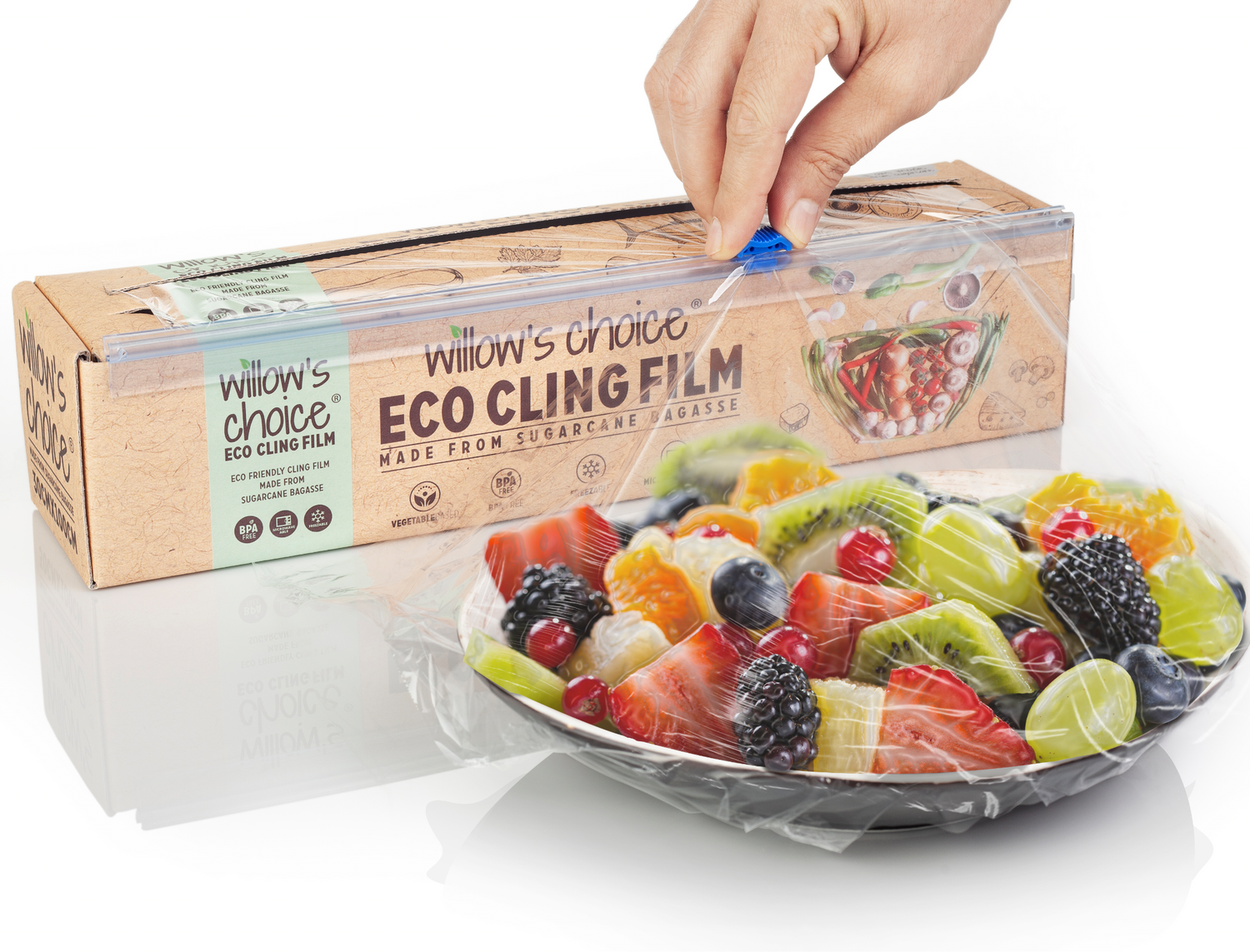
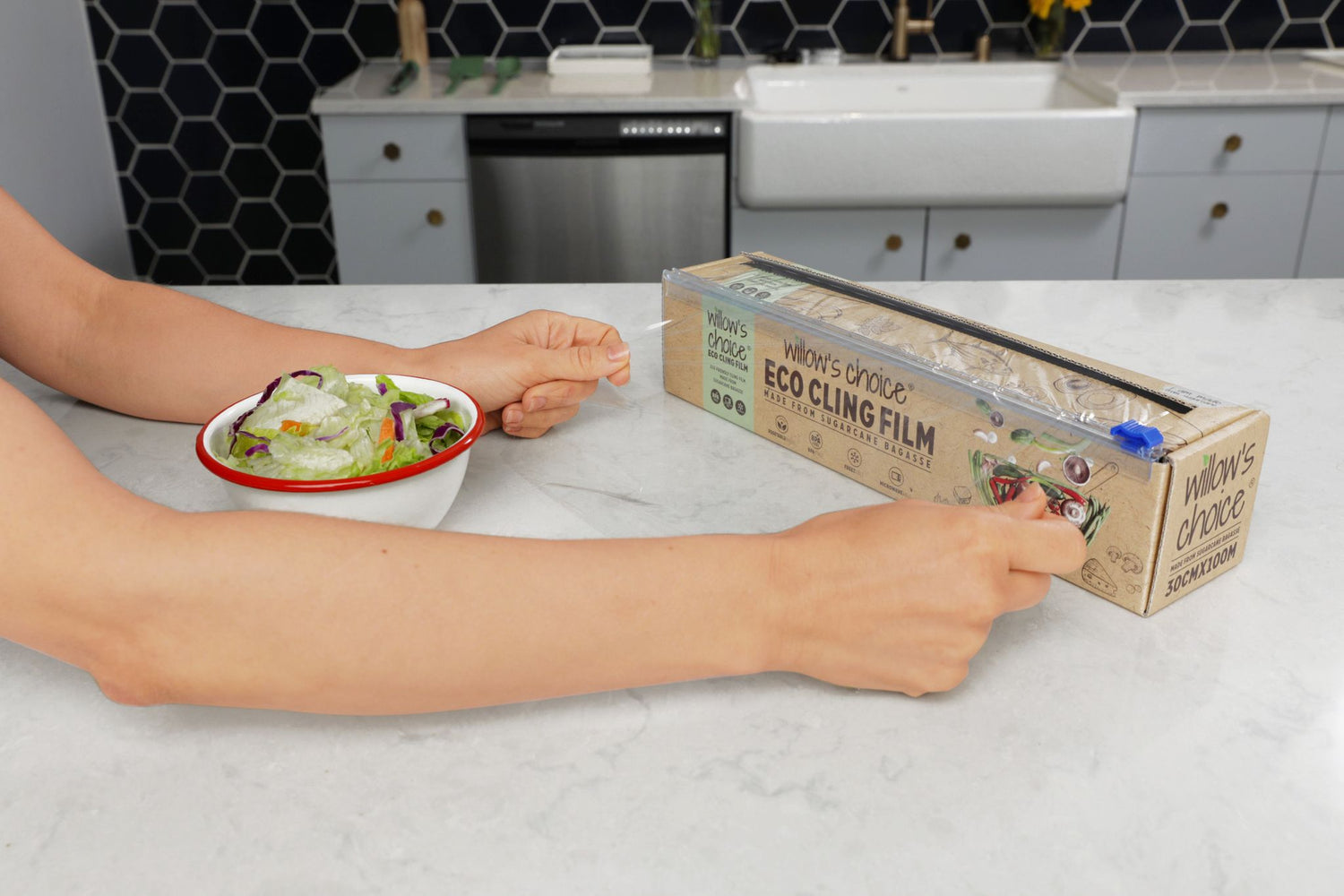
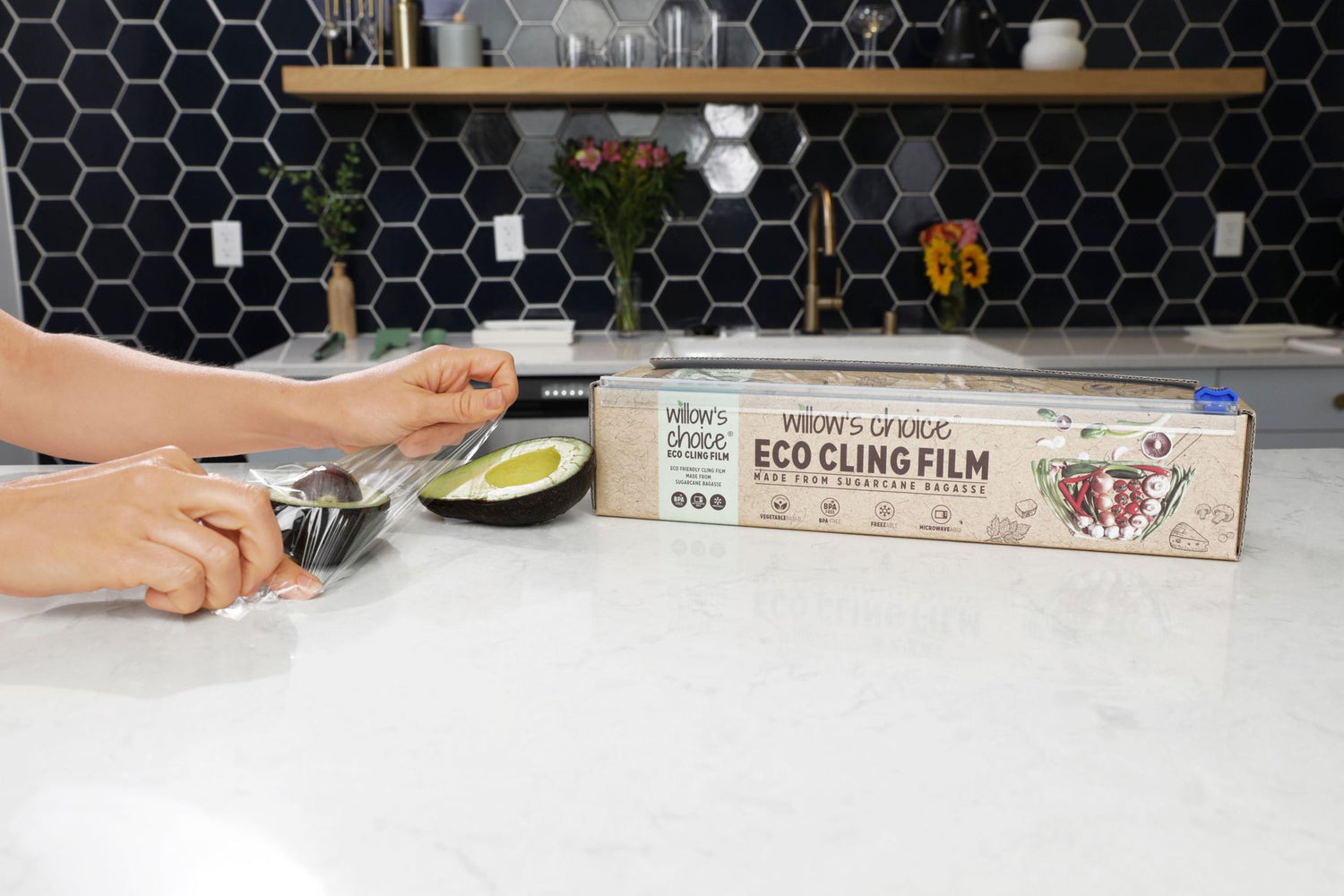
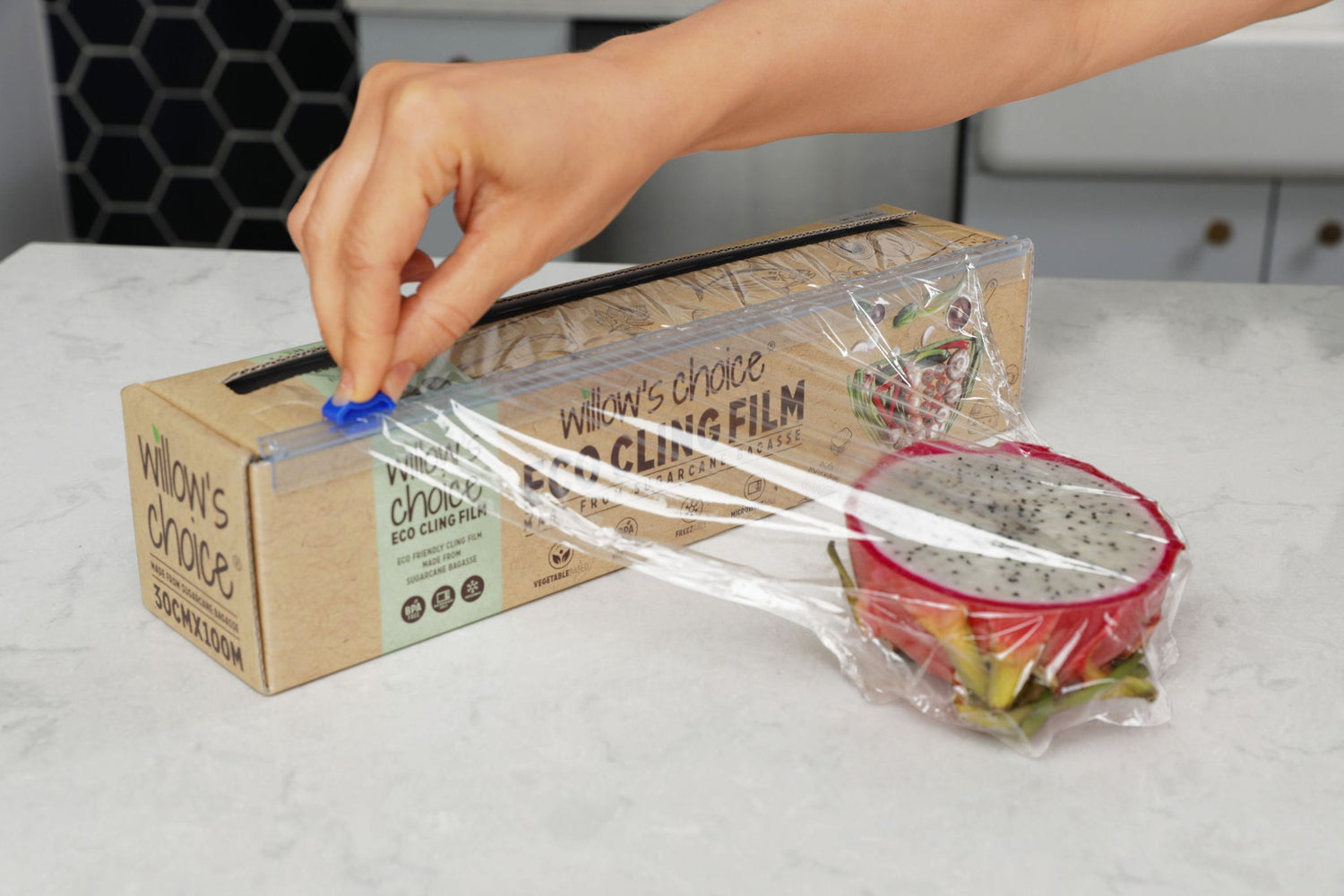
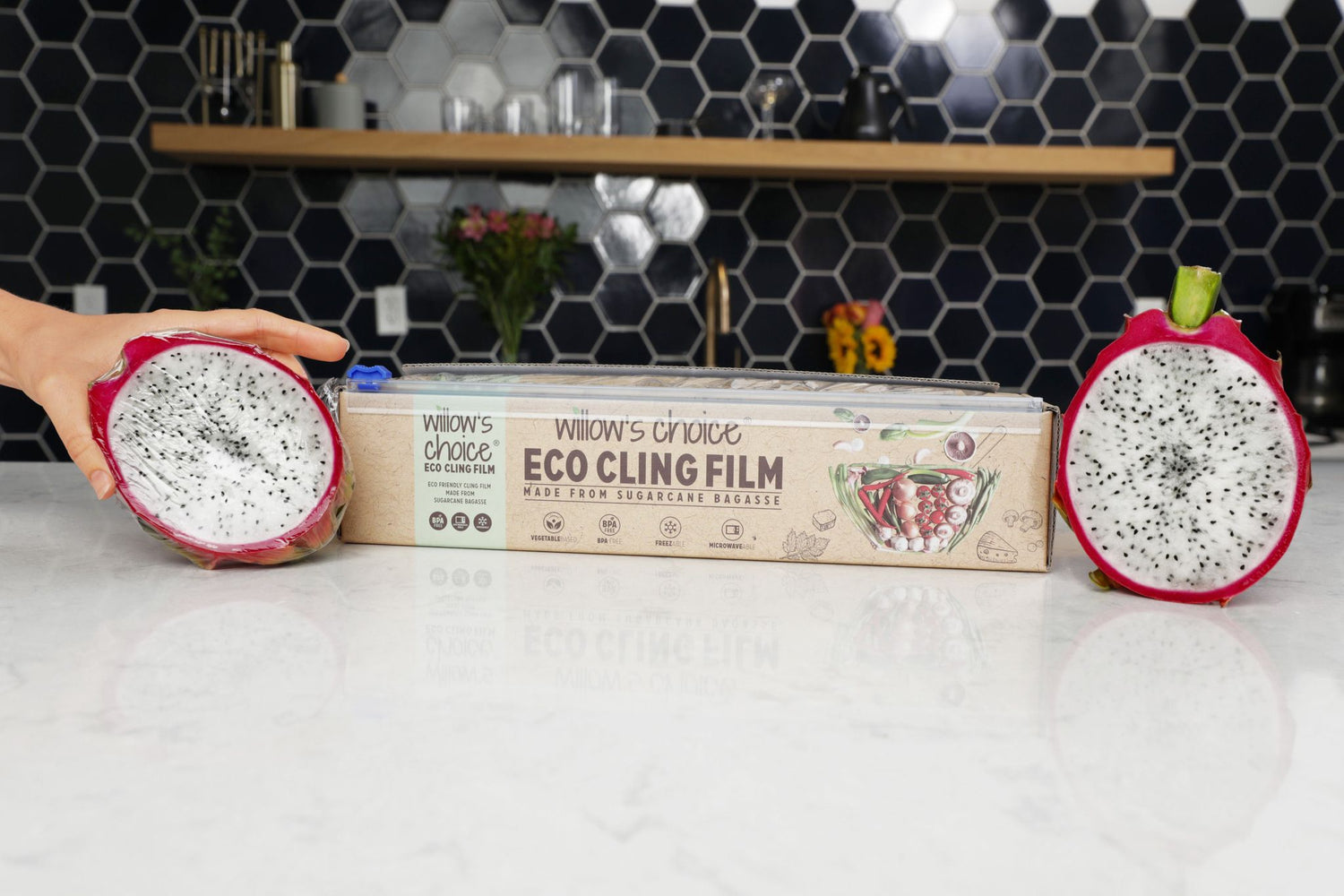
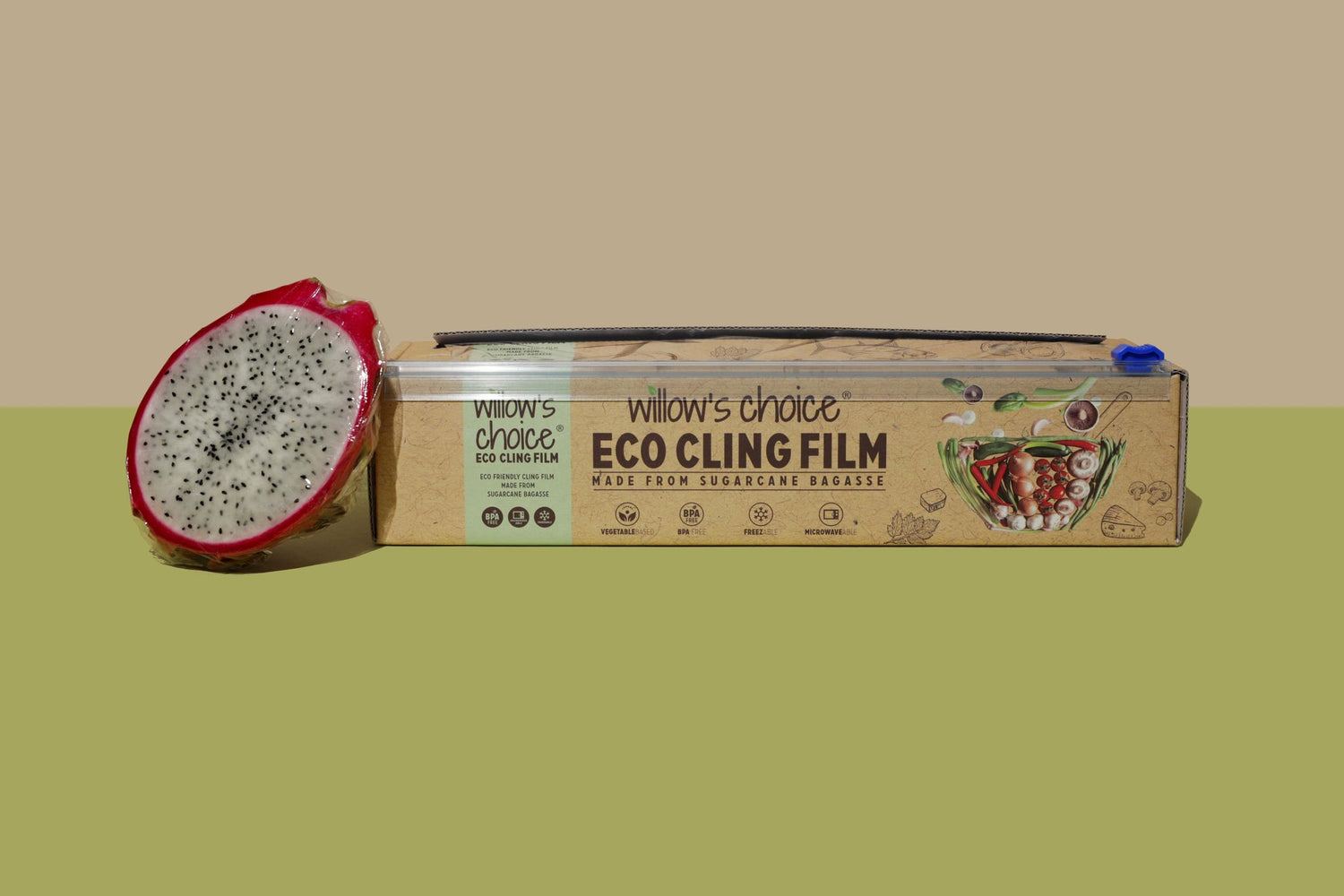
Eco Cling Film | Made from Sugarcane Plant Based Material | Vegan, Recyclable, BPA Free | Microwave Safe with Dispenser & Cutter (100m x 30cm)
- Regular price
-
£19.99 - Regular price
-
- Sale price
-
£19.99
